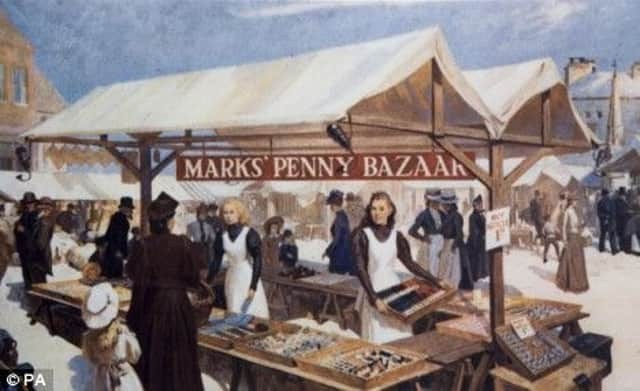David Behrens: My DNA’s travels in time and space – from California to Otley


A short while later, the first Marks & Spencer opened its doors in a covered arcade in Leeds.
Maybe the story is true, maybe not. I’ve told it to dozens of M&S cashiers and none of them has ever offered me a founders’ discount. In any case, Spencer apparently left the business early, and retired on the £15,000 he’d made from his investment.
Advertisement
Hide AdAdvertisement
Hide AdHe was born in Skipton; the Hanbys, the branch of my family from whom the money supposedly came, were 16 miles away in Otley. We tend to think of pre-motorised generations as immobile groups of people rooted in their own settlements and seldom venturing to the village beyond. But the truth is somewhat different – a fact that was brought home to me this week when Sheffield University invited me to be part of the world’s first matching of modern DNA with that of ancient populations.


I was as surprised by the results as Thomas Spencer must have been when he discovered how much his £15,000 would have been worth 10 years later – for it turns out that my genetic code owes more to the wild west of America than to the West Riding of Yorkshire.
I was born on the wrong side of the county border, so my lineage was always going to be compromised, but I had not expected that the primitive population it would most closely match was that of the Chumash Paleo-Indians, a people who have lived along the California coast for the last 13,000 years.
I am clearly not a direct descendant: our genetic similarity is only 6.5 per cent, but the figure is higher than comparisons with any of the Viking, Ice Age or Stone Age European samples available.
Advertisement
Hide AdAdvertisement
Hide AdI don’t claim to fully understand the science, but Dr Eran Elhaik, a genetics lecturer at Sheffield, tells me that the ancient DNA has been extracted from 2,200 skeletons and mummies at archeological digs and in museums, and uploaded to a global database which compensates for gaps in the ancient data by using a system of genetic “markers” to identify and classify former populations.
The principle is thus the same as that used by labs to check the veracity of someone’s parentage, except that in this case, several hundred generations have gone between.
The question, though, is where and how far they have gone – and those 16 miles across lower Wharfedale traversed by the Hanbys and the Spencers appears to have been a mere speck on the map compared with the epic journeys of our earlier ancestors.
The Chumash people, I learn, originated near the Santa Barbara coast, and once lived in 150 or more independent villages. Their name means “bead maker” or “seashell people” – epithets no-one has ever applied to me.
Advertisement
Hide AdAdvertisement
Hide AdHowever, the transient, ocean-borne nature of ancient populations also connects them to the Caucasus area of Europe, between the Black Sea and the Caspian Sea. This is only slightly closer to Otley, but centuries of resettlement, inter-marriage and the Black Death have clearly clouded the issue. In any case, the comparison data is so far incomplete.
Nevertheless, there is a moral here. My results are of interest to no-one except me, and, I have never asserted any genetic exclusivity, even when trying to get the family’s £300 back from M&S.
But what of those who have? Would Nigel Farage and the other Brexiteers be compromised to learn that their genetic makeup was similarly broad?
The technology they are pioneering in Sheffield will soon be widely available, and most of those who use it will discover that their backgrounds are scattered just as widely as mine. It’s a historical inconvenience that makes a nonsense of “one nation” politics.
Advertisement
Hide AdAdvertisement
Hide AdFor the record, I also have a 5.1 per cent similarity with the ancient mummified Egyptians at an archeological site near Cairo, and a 4.8 per cent match with a genome of Stone Age Europeans from northern India. This is something I will have to bear in mind the next time the HR department sends me a form asking me to declare my ethnicity. White British no longer seems to cover it, does it?